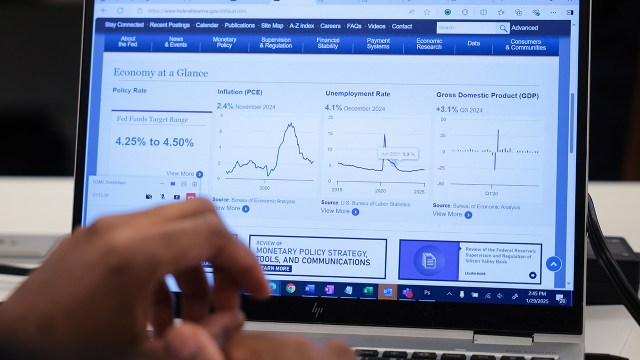
Republicans and Democrats have very different predictions about how the U.S. economy will fare in the next year. About three-quarters of Republicans and Republican-leaning independents (73%) expect the economy to be better a year into President Donald Trump’s second term. Nearly two-thirds of Democrats and Democratic leaners (64%) say it’ll be worse.
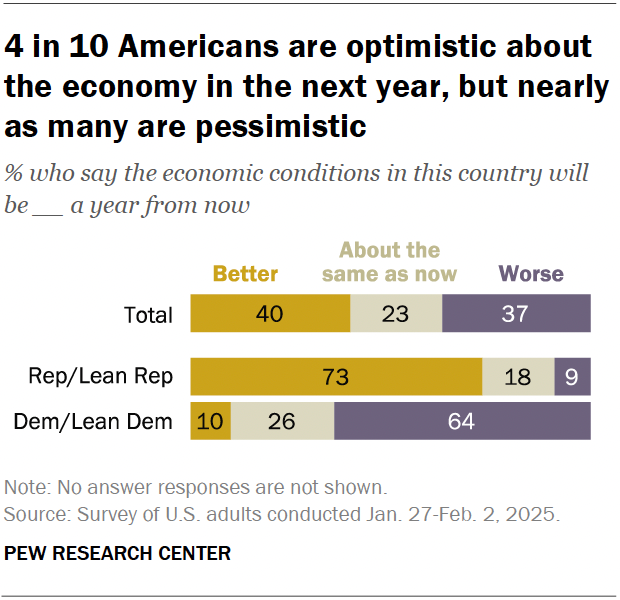
Overall, 40% of Americans expect economic conditions to improve in 2025. About as many say they will worsen (37%), and 23% say they’ll stay about the same.
While Americans are divided about the future of the economy, their current economic ratings remain largely negative. Around a quarter (24%) say the economy is in excellent or good shape, while far more say conditions are only fair (45%) or poor (31%), according to a Pew Research Center survey conducted Jan. 27-Feb. 2, 2025, among 5,086 U.S. adults.
Overall evaluations of current economic conditions are essentially unchanged over the last year. But Republicans’ views have improved a bit since the fall, while the opposite is true for Democrats.
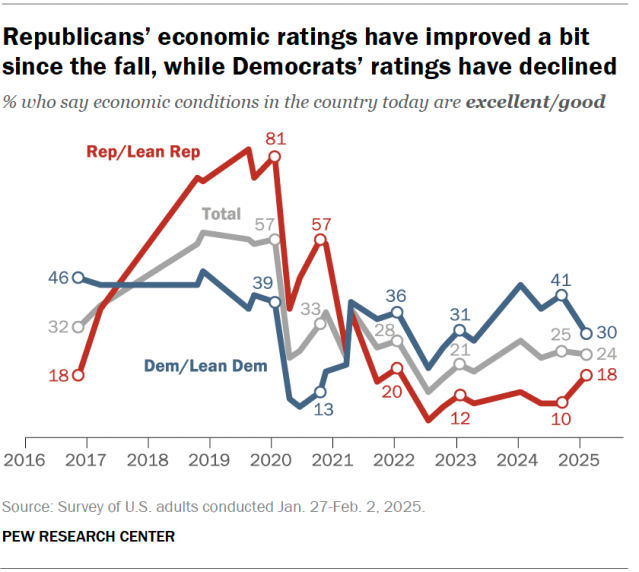
Still, more Democrats than Republicans rate current economic conditions positively:
- 30% of Democrats rate economic conditions as excellent or good, down from 41% in September.
- 18% of Republicans rate economic conditions as excellent or good, up from 10%.
Americans’ expectations about employment and the cost of living
Americans have mixed predictions when it comes to specific aspects of the economy.
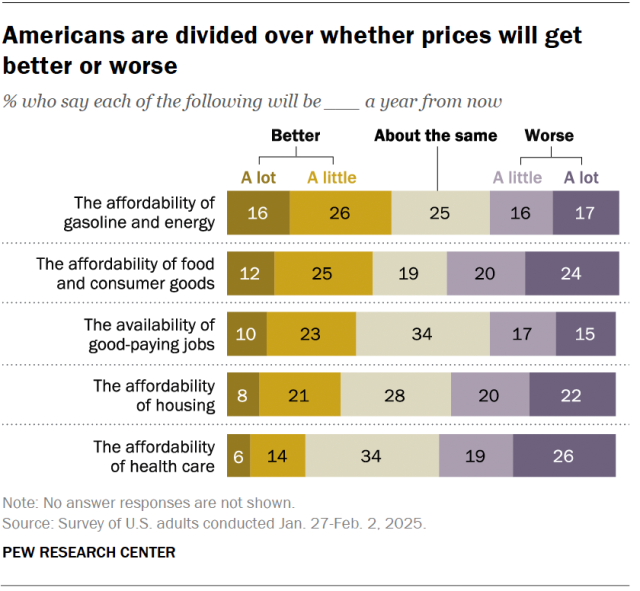
The public is most optimistic about the affordability of gasoline and energy. About four-in-ten say this will get better (42%) over the course of 2025, while 33% say it will get worse. A quarter say gas and energy prices will stay about the same.
Americans are fairly evenly split in their predictions about the job market. A third say the availability of good-paying jobs will improve, 32% say it will get worse and 34% say it won’t change much either way.
The public’s balance of opinion is more negative than positive when it comes to the affordability of:
- Food and consumer goods. More say the affordability of food and other goods will get worse (43%) than better (37%). And 19% say it will remain about the same.
- Housing. About four-in-ten (42%) say the affordability of housing will get worse. Roughly three-in-ten (29%) say it will get better, and a nearly identical share (28%) don’t expect it to change.
- Health care. Two-in-ten expect improved costs for health care, while more than twice as many (45%) say it will get more expensive. About a third (34%) expect costs to stay the same.
Republicans’ positive overall economic outlook extends to many – but not all – of these specific dimensions.
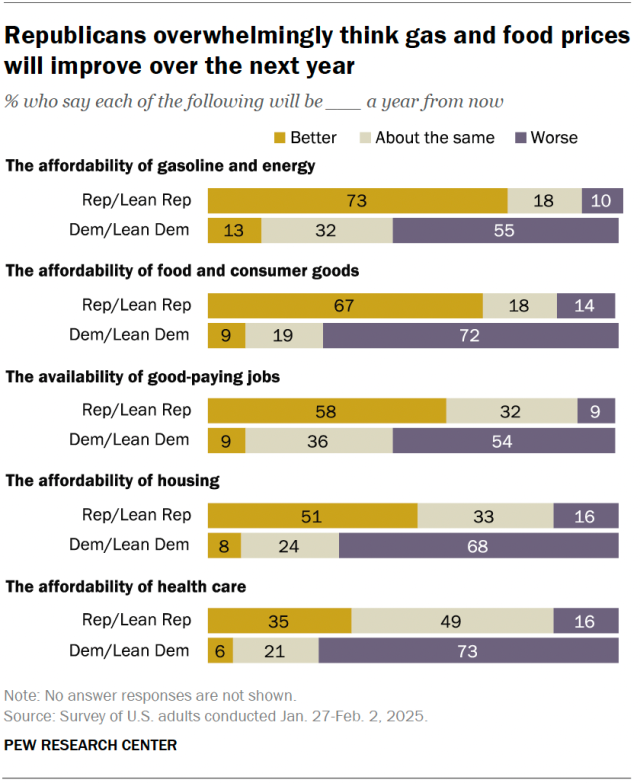
Large majorities of Republicans say the affordability of gas and energy (73%) and food and consumer goods (67%) will get better over the next year. A smaller majority says this about the availability of good-paying jobs (58%), while about half (51%) say housing costs will improve.
Roughly a third of Republicans (35%) say the affordability of health care will improve, while about half (49%) say it will stay the same.
By contrast, majorities of Democrats think these specific aspects of the economy will get worse over the next year.
Around seven-in-ten Democrats expect the affordability of health care (73%), food and consumer goods (72%), and housing (68%) to worsen over the next year. Narrower majorities say the affordability of gas and energy will worsen (55%) and that good-paying jobs will become harder to find (54%).
Note: Here are the questions used for this analysis, along with responses, and its methodology.
